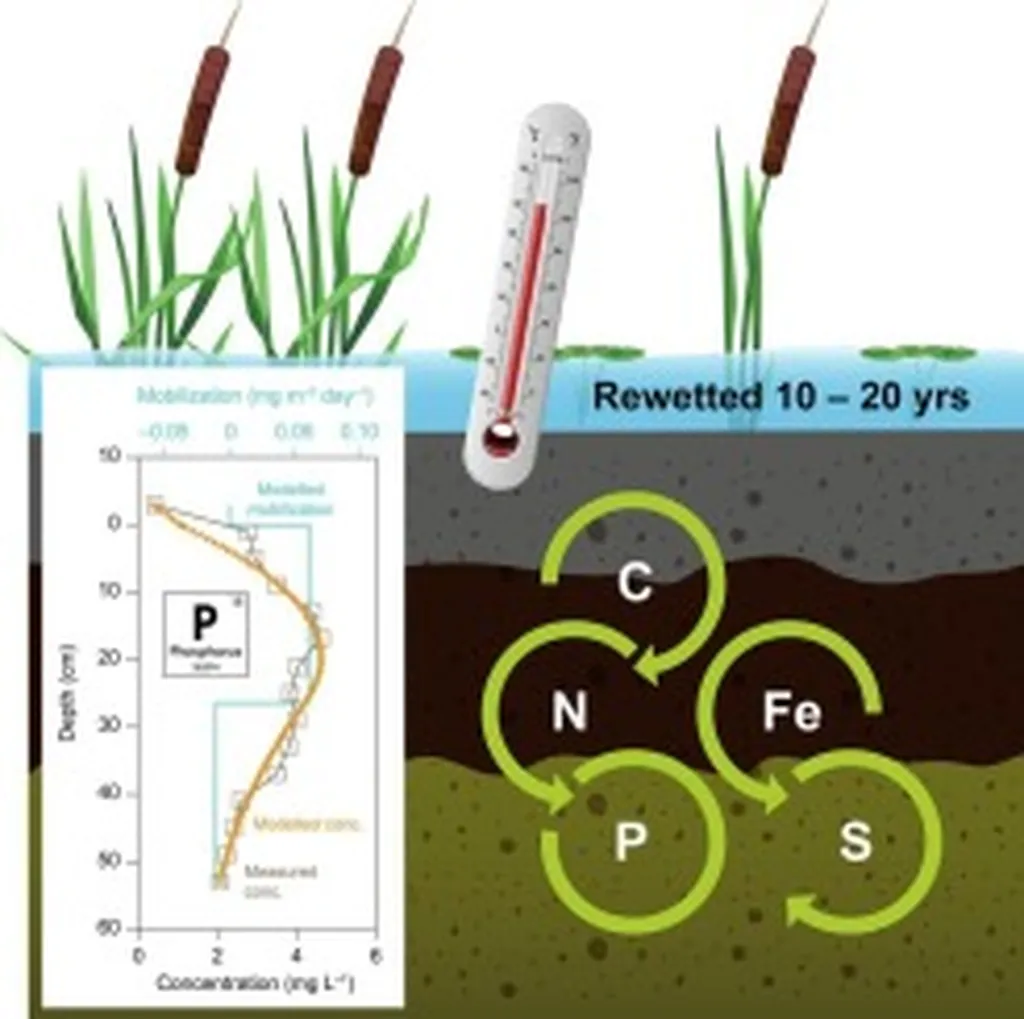In the heart of Europe’s peatlands, a silent transformation is underway, one that could reshape how we approach land restoration and agricultural management. A comprehensive study published in *Geoderma* has revealed that rewetting drained peatlands—often done to restore natural habitats and combat climate change—can lead to sustained elevated levels of phosphorus in the soil for decades. This finding has significant implications for the agriculture sector, particularly in how nutrient management is approached in rewetted areas.
The study, led by Nimisha Krishnankutty from the Department of Agroecology at Aarhus University, surveyed 64 natural and rewetted peatlands across six countries from 1997 to 2017. By analyzing 812 anoxic porewater samples, the researchers found that rewetted fens exhibited a wide range of dissolved substances, with soluble reactive phosphorus (SRP) levels spanning from 0.1 to 18.9 mg/L. These levels were significantly higher than those observed in natural fens.
“Rewetting drained peatlands is a crucial step in restoring these ecosystems, but our findings show that it can lead to a sustained release of nutrients, particularly phosphorus, over a long period,” Krishnankutty explained. “This has important implications for water quality and agricultural practices in these areas.”
The study found that depth-integrated mobilization rates for nutrients in rewetted fens were, on average, 23 times higher for SRP and 4.6 times higher for ammonium compared to natural fens. This sustained nutrient release can have both positive and negative impacts on agriculture. On one hand, elevated phosphorus levels can enhance soil fertility, potentially benefiting crop growth. On the other hand, excessive nutrient mobilization can lead to water quality issues, such as eutrophication, which can harm aquatic ecosystems and drinking water supplies.
One of the most intriguing findings was the seasonal variation in SRP concentrations in rewetted fens densely colonized by helophytes, which are plants that grow in or near water. SRP concentrations were lower during the growing season, suggesting that these plants play a role in nutrient uptake and cycling. This could be a valuable insight for farmers looking to manage nutrient levels naturally.
The study also found that SRP concentrations remained elevated 10–20 years after rewetting, but a significant decrease was observed at sites with low iron content in the peat. This suggests that iron plays a crucial role in phosphorus mobilization and retention in these ecosystems.
So, what does this mean for the future of agriculture and land management? The findings highlight the need for a more nuanced approach to rewetting peatlands. While rewetting is essential for restoring these ecosystems and combating climate change, it’s clear that nutrient management is a complex issue that requires careful consideration.
“Our study underscores the importance of understanding the long-term impacts of rewetting on nutrient dynamics,” Krishnankutty said. “This knowledge can guide more effective restoration and management strategies, ensuring that we balance the needs of agriculture with those of the environment.”
As we look to the future, this research could shape how we approach land restoration and nutrient management in agricultural landscapes. By understanding the intricate dynamics of nutrient mobilization in rewetted peatlands, we can develop strategies that maximize the benefits of rewetting while minimizing potential drawbacks. This could lead to more sustainable agricultural practices, improved water quality, and healthier ecosystems.
In the end, the study published in *Geoderma* by lead author Nimisha Krishnankutty from the Department of Agroecology at Aarhus University serves as a reminder that nature is complex and interconnected. By taking a holistic approach to land management, we can ensure that our actions today pave the way for a more sustainable and resilient future.

